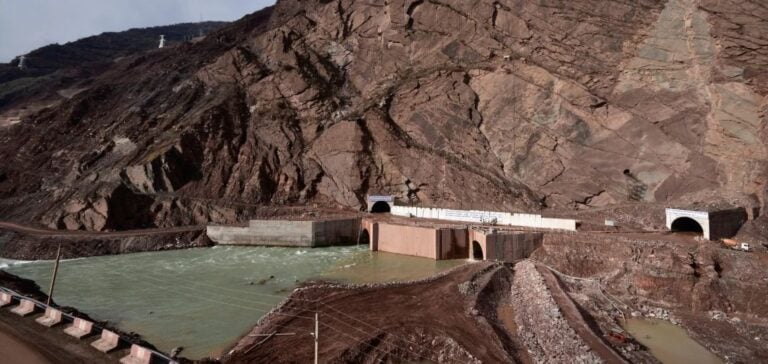Electricity shortages have become a regular phenomenon for Tajikistan’s 10 million residents, especially during the winter months. The country relies on hydropower for 95% of its electricity, but low precipitation levels and increasing energy demand have made the situation critical. Authorities are optimistic, however, that the ongoing construction of the Rogun Dam will reverse this trend, positioning it as an innovative and decisive solution.
Since September, power outages have limited electricity access to just a few hours daily for most households. The situation is further exacerbated by outdated infrastructure that cannot cope with a consumption rate that has doubled since the country’s independence in 1991. The national electricity company, Barki Tojik, describes these restrictions as “inevitable” and calls for collective efforts to modernize the grid.
A Massive Project to Address an Energy Crisis
The Rogun Dam, set to reach a height of 335 meters, will become the tallest dam in the world. Once operational, it is expected to generate 3,600 megawatts—equivalent to the output of three nuclear power plants. This monumental project, initially launched in 1976 during the Soviet era, faced decades of economic and political hurdles before being revived by Tajikistan’s government.
At the construction site, approximately 17,000 workers labor day and night to create infrastructure that promises to reshape the country’s energy landscape. Zafar Bouriev, an engineer working on the project, explains that the reservoir will reach an altitude of 1,300 meters, ensuring optimal use of water resources. Slogans such as “Rogun is Tajikistan’s radiant future” underscore the symbolic and economic significance of this dam.
Climate and Geopolitical Challenges
Tajikistan’s ambitions face significant challenges. The region is warming faster than the global average, resulting in reduced precipitation and melting glaciers that feed the rivers. According to the World Bank, these climatic changes directly threaten the long-term viability of projects like Rogun.
Moreover, water remains a sensitive issue in Central Asia, with resources contested among states. Tajikistan envisions exporting some of the electricity generated to neighbors like Pakistan and India. However, these plans have raised concerns in countries such as Uzbekistan, which fears adverse effects on its water supply.
An Uncertain Future
The astronomical cost of Rogun—estimated at over $6 billion—also raises questions. While the project has been praised by international organizations for contributing to renewable energy development, concerns persist about its environmental and economic consequences. Meanwhile, other regional hydraulic initiatives, such as the Kambar-Ata Dam in Kyrgyzstan, attempt to balance energy development with sustainability.
As Tajikistan strives to emerge from its energy crisis, Rogun embodies both the hope for a brighter future and the complex challenges of a changing world. The success of this project will determine not only the country’s energy destiny but also its relations with neighbors and its resilience to climate change.






















